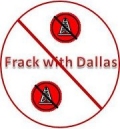 |
 |





 |








 |
    |
Threats to Fish, Wildlife and Habitat As has already been discussed, threats to fish, wildlife, the natural environment and animal, fish and bird habitats are a significant negative side efect of frac sand mining. In the larger picture, this also can negative impact an area by reducing sporting activities such as hunting, fishing, trapping, birdwatching and other activities that produce much-needed tourism dollars for rural communities.
The first threat is to habitat. Clear cutting and scalping the land not only defoliates the quarry area, but it also removes valuable topsoil that is necessary for restoration. Additionally, it produces erosion that further disturbs natural habitats at the quarry site and potentially for some distance away from the site. In the case of damage to a creek, stream or river the damage can extend for many miles as banks are eroded, vegetation is washed away and water is polluted with unnatural sedimentation and silting that wipes out breeding areas. In some cases the temperature of a waterway can be altered enough to kill certain species of fish. Trout, which require cold water to breathe, is but one example where a few degrees of water temperature change can have catastrophic consequences. Signs of this are already showing up in areas of the White River Basin of Arkansas near Bull Shoals Lake and around the Buffalo National River confluence at Buffalo City north of Calico Rock. The second threat is noise, which can and will displace wildlife such as birds and animals. Loud, constant noise from a heavy industrial site will cause aminals and birds to flee an area to the sanctuary of quiet. It will also disturb the mating habits of many animals and birds. The third threat is air pollution, especially from airborne crystalline silica dust that can and will kill animals and birds, and may cause harm to fish if water is heavily enough polluted by it. Just as silicosis and cancer can affect humans, so too can the effects of silica dust have adverse health effects on wildlife to the extent that it can threaten species that are exposed to it. All these effects can be longlasting, in some cases permanent, especially considering the duration that some mining operations will functioning. Nature tends to balance itself, and has done a very good job of doing that over eons, but human intervention can disrupt the balance that nature intends causing irreparable harm to areas beseiged by frac sand mining operations. Real Property Devaluation Adjacent to Mining Operations Looking at aerial photos of a frac sand mining operation, it is apparent that the amount of damage done to the land is tremendous. Sometimes, that visual damage is well hidden from the casual observation of the general public. But, not everything goes unnoticed. Air quality problems around a frac sand mine will frequently be noticeable, and that could be a major factor in setting a fair market value for real estate in the immediate vicinity of the mining operation. Noise from a heavy industrial process, especially one operating around the clock and around the calendar, will always be noticeable. Heavy truck traffic at all hours of the day and night will cause congestion, accidents and noise. Lights that provide nighttime visibility at the mining site will bleed off-site to disturn nearby neighbors. Each of these problems will devalue property surrounding the mining operation resulting in a lower tax base for local communities and a marginalized real estate market for those wanting to relocate to escape the industry that has invaded their solitude and comfort. Without the benefit of zoning ordinances such as are often found in urban areas rural residents will have little to protect themselves from the nuisances of industry. And, if the resulting condition further erode the attraction to an area for recreation and reduces revenues to that area, then the economic effects can be paralyzing. There is a very good reason why mining operations have usually been done far away from residential areas and generally away from farming and ranching areas, as well. Looking at the coal mining areas of West Virginia, Pennsylvania and Ohio, one can readily see the damage that mining does when it is in close proximity to inhabited areas. And, coal mining is an underground endeavor, in most cases. But, nobody would argue that mining towns are not as propserous, as clean or as livable as places with green pastures and blue skies. In fact, the only real value property adjacent to a sand mine would have is to the mining company wanting to expand its working area, and that is unlikely to happen unless it starts running out of sand on its present landholdings. "A man's home is his castle", or so we have always been told. The invasive nature of frac sand mining can quickly turn one man's castle into his prison, his livelihood from farming or ranching into a major liability and his quality of life into an unhealthy and dangerous existence in which he is stuck with little opportunity to sell his property and move unless his unwanted neighbor buys him out. Next: Reclamation and Restoration After Mining Ceases
|
Friends of the North Fork and White Rivers |